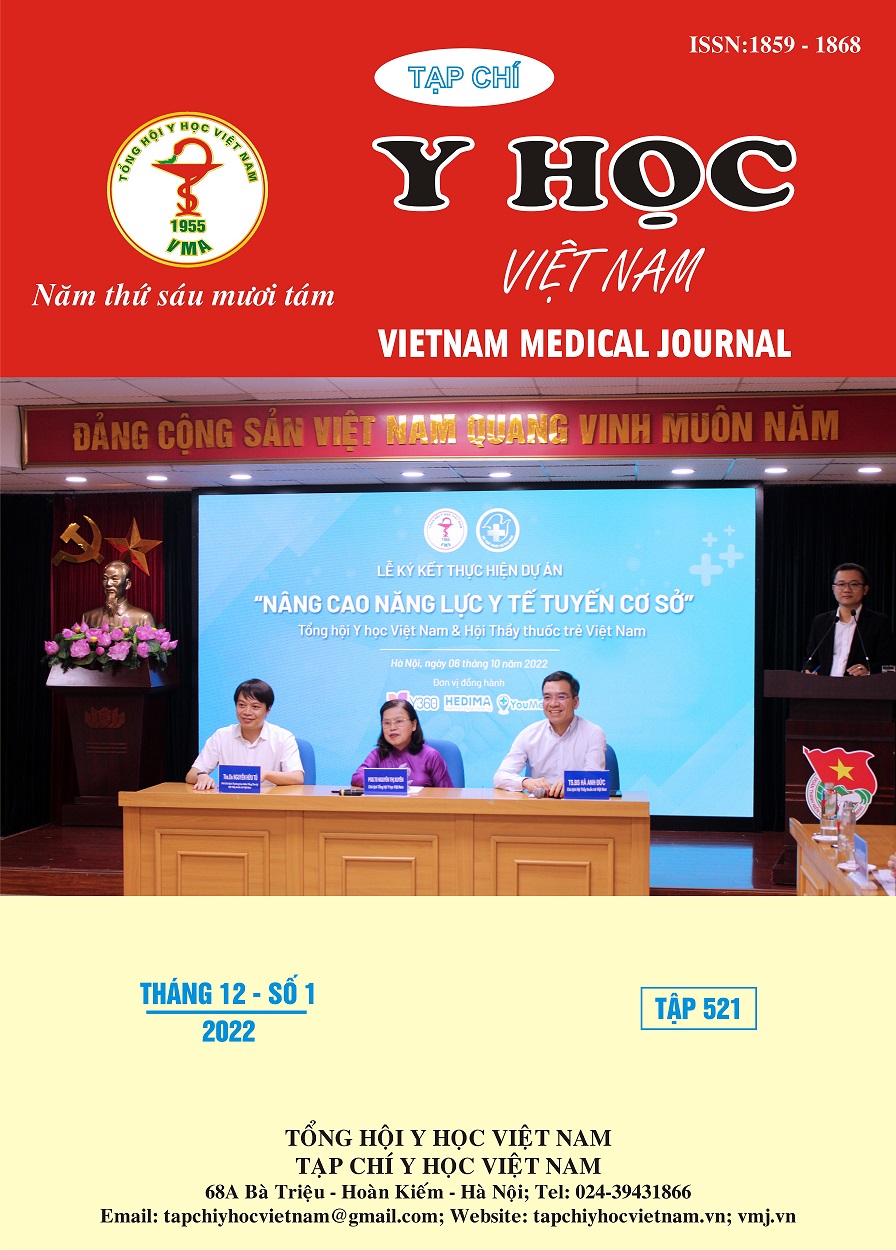STRESS AND RELATED FACTORS AMONGST LECTURERS AT UNIVERSITIES IN HO CHI MINH CITY
Main Article Content
Abstract
To assess the percentage of stress and associated factors among lecturers on lecturers of four universities in Ho Chi Minh City in 2022. A cross-sectional study was performed between November 2021 to August 2022 among lecturers in Ho Chi Minh City, using the Perceived Stress Scale (PSS) to measure the perception of stress. Data were collected via a self-administered questionnaire. A total of 394 lecturers completed the survey, the mean age of the participant was 38.6 ± 8.7 years and the majority of respondents was female (60.7%). There was 19.8% of participants had stress categorized the level of mild and severe was 18.3% and 1.5 %, respectively. There was a significant relationship between stress and gender, the piece of information from social networks, knowledge, and practice of COVID-19 (p<0.05). The rate of stress amongst lecturers is found at a low level, these may be a piece of important evidence to implement psychological screening and timely support.
Article Details
Keywords
COVID-19, lecturers, stress, Ho Chi Minh City
References
2. WHO (2022). Mental health in Viet Nam, https://www.who.int/vietnam/health-topics/mental-health, truy cập ngày 27/09/2022.
3. Le HT, Lai AJX, Sun J, et al. Anxiety and Depression Among People Under the Nationwide Partial Lockdown in Vietnam [published correction appears in Front Public Health. 2021 May 24;9:692085]. Front Public Health. 2020;8:589359. Published 2020 Oct 29. doi:10.3389/fpubh.2020.589359
4. Rauschenbach, & Krumm, Stefan & Thielgen, Markus & Hertel, Guido. (2012). Age and work stress: A review and meta-analysis. Journal of Managerial Psychology. 10.1108/JMP-07-2013-0251.
5. Nguyễn Thái Quỳnh Chi, Trương Quang Tiến (2014). Tình trạng stress của cán bộ và giảng viên trường đại học Y tế Công cộng và một số yếu tố liên quan. Tạp chí Y tế Công cộng, 9(33):26-31.
6. Viện khoa học an toàn và vệ sinh lao động (2018). Stress nghề nghiệp ở giáo viên cần được kiểm soát bằng chuẩn bị tốt tâm lý, http://vnniosh.vn/Details/id/8030/Stress-nghe-nghiep-o-giao-vien-can-duoc-kiem-soat-bang-chuan-bi-tot-tam-ly, truy cập ngày 27/09/2022.
7. Bộ Y tế (2021). Stress và sang chấn tâm lý vì COVID-19: Có lúc nhìn sang nhau thấy ai cũng khóc, https://moh.gov.vn/tin-tong-hop/-/asset_publisher/k206Q9qkZOqn/content/stress-va-sang-chan-tam-ly-vi-covid-19-co-luc-nhin-sang-nhau-thay-ai-cung-khoc, truy cập ngày 27/09/2022.
8. Dao-Tran TH, Anderson D, Seib C. The Vietnamese version of the Perceived Stress Scale (PSS-10): Translation equivalence and psychometric properties among older women. BMC Psychiatry. 2017;17(1):53. Published 2017 Feb 6. doi:10.1186/s12888-017-1221-6
9. Kim HJ. Reliability and Validity of the 4-Item Version of the Korean Perceived Stress Scale. Res Nurs Health. 2016 Dec;39(6):472-479. doi: 10.1002/nur.21745. Epub 2016 Aug 22. PMID: 27546692.
10. Jovanovic V, Gavrilov-Jerkovic V. More than a (negative) feeling: validity of the perceived stress scale in Serbian clinical and non-clinical samples. Psihologija. 2015;48(1):5–18.
11. Klein EM, Brähler E, Dreier M, et al. The German version of the Perceived Stress Scale - psychometric characteristics in a representative German community sample. BMC Psychiatry. 2016;16:159. Published 2016 May 23. doi:10.1186/s12888-016-0875-9
12. Cohen S, Kamarck T, Mermelstein R. A global measure of perceived stress. J Health Soc Behav. 1983 Dec;24(4):385-96. PMID: 6668417.


